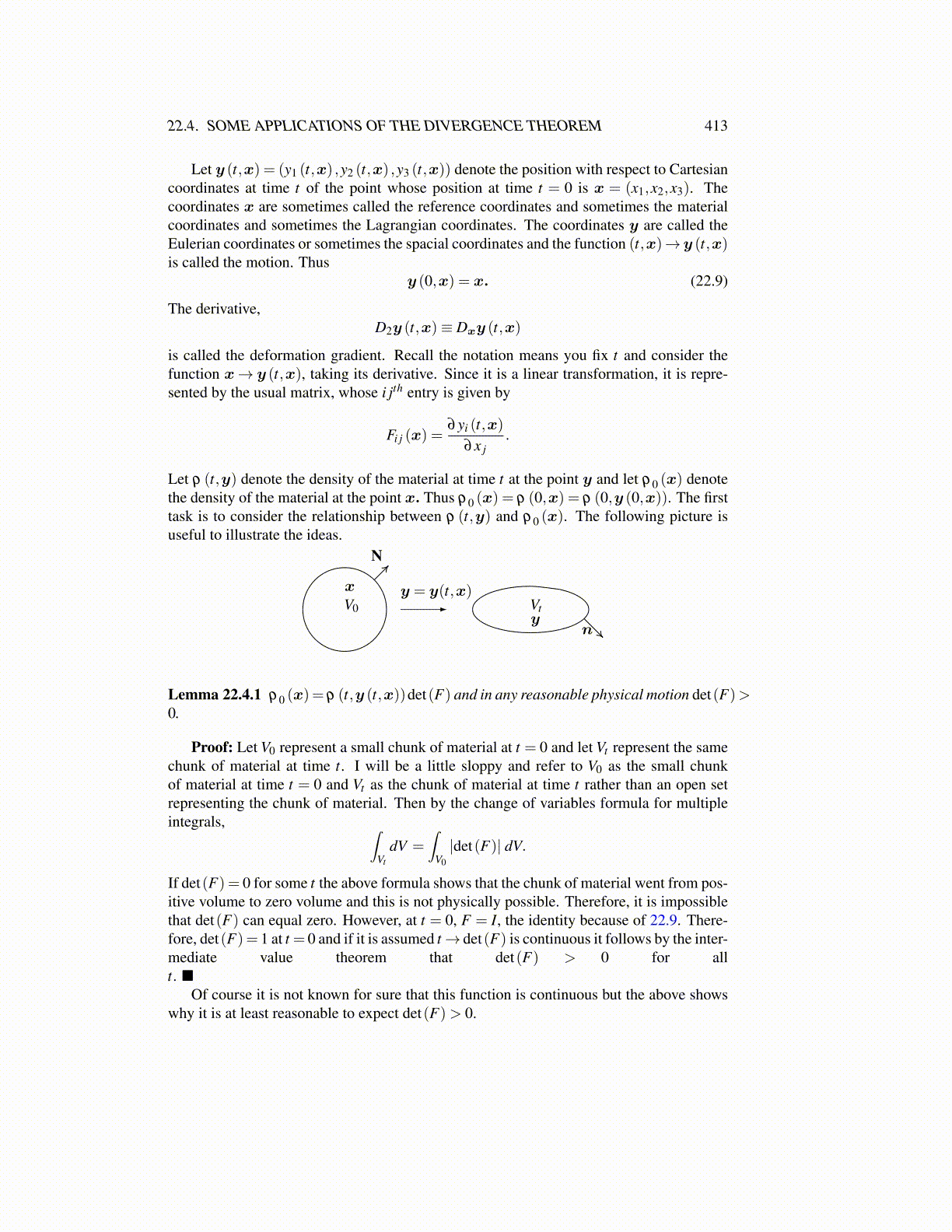
22.4. SOME APPLICATIONS OF THE DIVERGENCE THEOREM 413
Let y (t,x) = (y1 (t,x) ,y2 (t,x) ,y3 (t,x)) denote the position with respect to Cartesiancoordinates at time t of the point whose position at time t = 0 is x = (x1,x2,x3). Thecoordinates x are sometimes called the reference coordinates and sometimes the materialcoordinates and sometimes the Lagrangian coordinates. The coordinates y are called theEulerian coordinates or sometimes the spacial coordinates and the function (t,x)→ y (t,x)is called the motion. Thus
y (0,x) = x. (22.9)
The derivative,D2y (t,x)≡ Dxy (t,x)
is called the deformation gradient. Recall the notation means you fix t and consider thefunction x→ y (t,x), taking its derivative. Since it is a linear transformation, it is repre-sented by the usual matrix, whose i jth entry is given by
Fi j (x) =∂yi (t,x)
∂x j.
Let ρ (t,y) denote the density of the material at time t at the point y and let ρ0 (x) denotethe density of the material at the point x. Thus ρ0 (x) = ρ (0,x) = ρ (0,y (0,x)). The firsttask is to consider the relationship between ρ (t,y) and ρ0 (x). The following picture isuseful to illustrate the ideas.
x y = y(t,x)V0
N
Vt
ny
Lemma 22.4.1 ρ0 (x)= ρ (t,y (t,x))det(F) and in any reasonable physical motion det(F)>0.
Proof: Let V0 represent a small chunk of material at t = 0 and let Vt represent the samechunk of material at time t. I will be a little sloppy and refer to V0 as the small chunkof material at time t = 0 and Vt as the chunk of material at time t rather than an open setrepresenting the chunk of material. Then by the change of variables formula for multipleintegrals, ∫
Vt
dV =∫
V0
|det(F)| dV.
If det(F) = 0 for some t the above formula shows that the chunk of material went from pos-itive volume to zero volume and this is not physically possible. Therefore, it is impossiblethat det(F) can equal zero. However, at t = 0, F = I, the identity because of 22.9. There-fore, det(F)= 1 at t = 0 and if it is assumed t→ det(F) is continuous it follows by the inter-mediate value theorem that det(F) > 0 for allt. ■
Of course it is not known for sure that this function is continuous but the above showswhy it is at least reasonable to expect det(F)> 0.